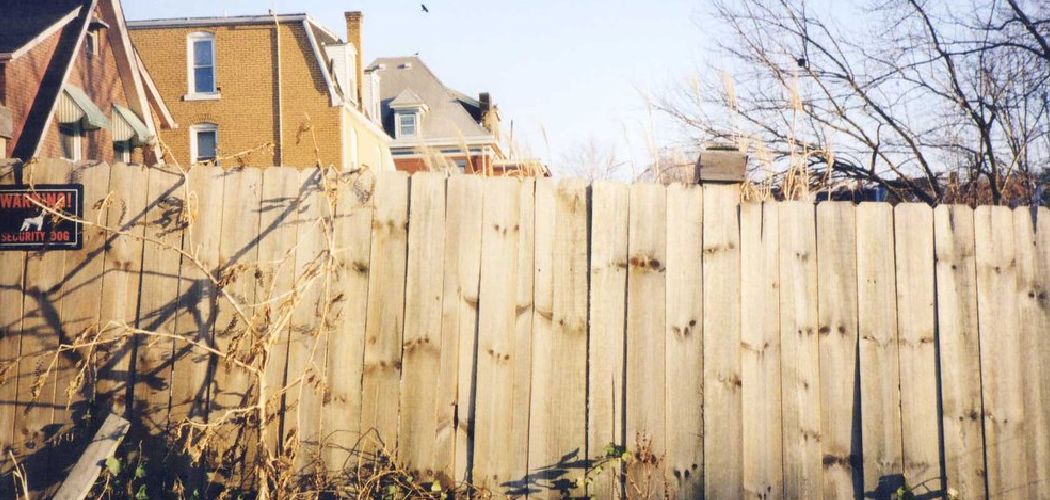Do you need help determining if the fence on your property belongs to you or your neighbor? This can be a common issue, especially if you live in a neighborhood with similar fences.
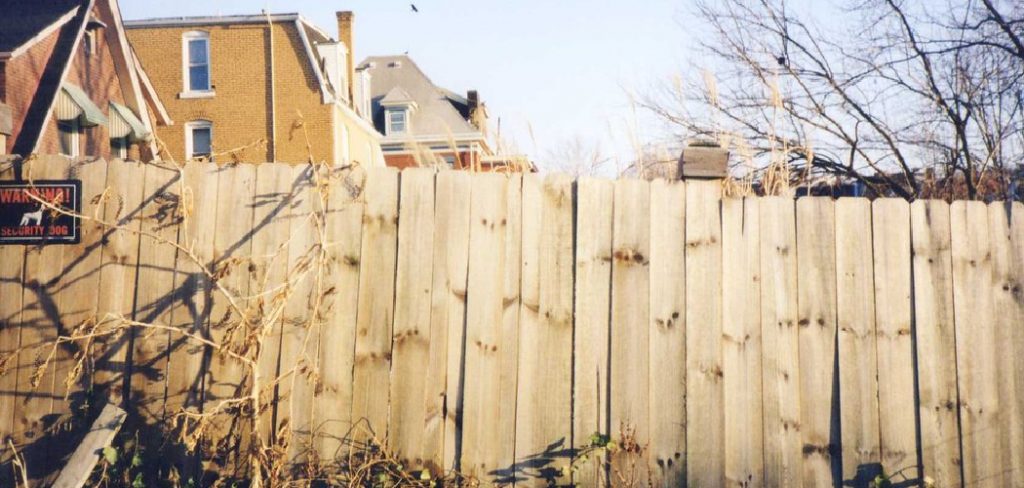
Determining the ownership of a boundary fence can often feel like navigating through a maze of legal and communal guidelines. It’s a common quandary for homeowners, as fences play a crucial role in defining property lines, ensuring privacy, and maintaining security.
The process of identifying whether a fence belongs to you or your neighbor or is a shared responsibility can involve a combination of understanding local laws, reviewing property documents, and sometimes, engaging in neighborly diplomacy.
This guide aims to provide clear steps and practical advice on how to tell if the fence is yours, setting the foundation for any maintenance, modification, or dispute resolution efforts you may need to undertake.
What are the Benefits of Knowing Fence Ownership?
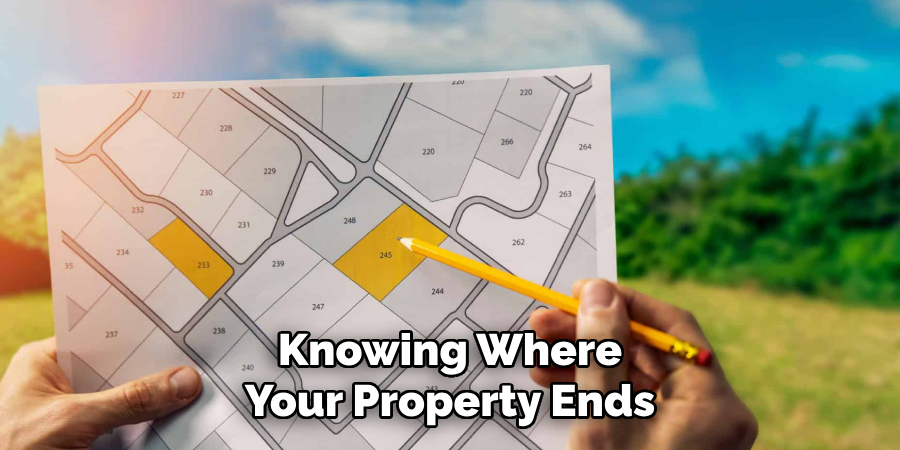
Understanding fence ownership comes with several benefits, such as:
- Clear Boundary Lines: Knowing where your property ends and your neighbor’s begins is essential for maintaining a good relationship with them.
- Responsible Maintenance: If the fence belongs to you, it is your responsibility to maintain it. Knowing this can help you plan and budget for any repairs or updates needed.
- Avoiding Disputes: Knowing who is responsible for the fence can help prevent conflicts with your neighbor. It allows you to address any issues or concerns in a diplomatic manner.
- Compliance With Local Laws: Many municipalities have specific regulations regarding fences, including height and placement restrictions. Knowing who owns the fence can ensure compliance with these laws.
These are just some of the benefits that come with knowing the ownership of a fence. Now, let’s dive into how you can determine if the fence is yours.
What Will You Need?
Before diving into the process of determining fence ownership, it’s essential to gather some information and tools that will aid in your investigation. These include:
- Property Deed or Title: This legal document contains a detailed description of your property boundaries, including any structures built on them.
- Land Survey Maps: These maps show official boundary lines and can be obtained from the local government or a licensed surveyor.
- Neighbor’s Deed or Title: If your neighbor’s fence is in question, you may need to review their property deed as well.
- Tape Measure: This tool will help measure the distance between fences and determine if they align with property boundaries.
- Camera: Documenting the condition of the fence can provide valuable evidence in case of disputes.
- Local Fence Laws: Familiarizing yourself with local ordinances and regulations can help clarify any legal responsibilities for fence ownership and maintenance.
Once you have gathered these materials, it’s time to start investigating the ownership of the fence in question.
10 Easy Steps on How to Tell if the Fence is Yours
Step 1. Review Your Property Deed:
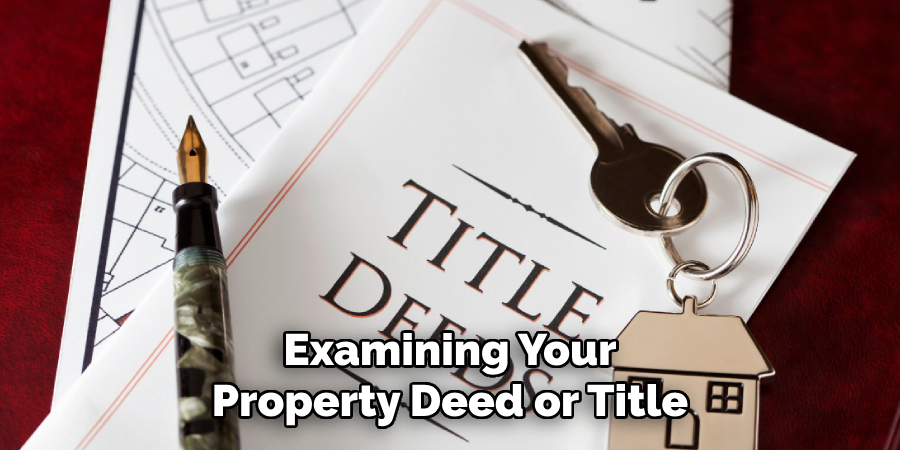
Begin by examining your property deed or title in depth. Look for any mentions or descriptions of fence structures along your property boundaries. These documents might indicate whether a fence was erected within the boundary lines of your property, which can be a primary indicator of ownership.
Step 2. Consult Land Survey Maps:
After reviewing your property deed, the next step is to consult land survey maps to visually represent your property boundaries. These maps often provide a detailed layout of your property and any existing structures, like fences, in relation to those boundaries.
By comparing your property’s layout with the location of the fence in question, you can gain insights into whether the fence lies within your property lines. If you still need to get a recent survey map, consider hiring a licensed surveyor to conduct a new survey for the most accurate and up-to-date information.
Step 3. Analyze Neighbor’s Deed or Title:
Comparing your findings with your neighbor’s property documentation can provide further clarification on fence ownership. Request or obtain a copy of your neighbor’s deed or title to see if there are any mentions or diagrams of the fence in question.
Often, this can shed light on whether the fence was intended to mark the property boundary or if it’s regarded as a shared or individual asset. This step can eliminate confusion and foster a mutual understanding of the boundary lines and responsibilities.
Step 4. Measure the Distance and Location of the Fence:
Armed with your tape measure, accurately measure the distance between the fence and known property boundary markers. Check these measurements against the descriptions and diagrams in your property deed and land survey maps.
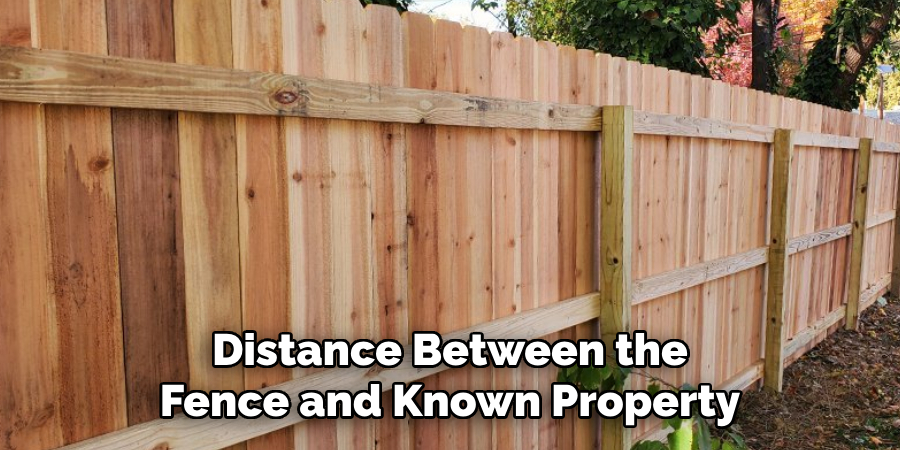
This can help you establish whether the fence is situated entirely within your property, lies on the boundary, or encroaches onto your neighbor’s land. Precise measurements are critical in cases where the ownership of a boundary fence is influenced by its exact placement in relation to the legal property lines.
Step 5. Document the Fence’s Condition:
Use your camera to take detailed photographs of the fence from various angles. Documenting its condition, type, and any distinguishing features can be helpful. Pay particular attention to signs of wear and tear, modifications, or repairs, as these factors might play a role in determining who has taken responsibility for the fence in the past. This documentation can also be crucial evidence in any future disputes or discussions about the fence with your neighbor or local authorities.
Step 6. Consult Local Fence Laws and Regulations:
Now that you understand where the fence is located in relation to your property, it’s important to review the local laws and regulations regarding fences. Many municipalities have specific ordinances that govern fence heights, materials, and placements, and some may even dictate who owns a fence based on its location.
This information can provide crucial insights into your legal rights and responsibilities concerning the fence. If the law stipulates that a fence on the boundary line is shared property, for example, both you and your neighbor may be equally responsible for its maintenance and repair.
Step 7. Initiate Communication with Your Neighbor:
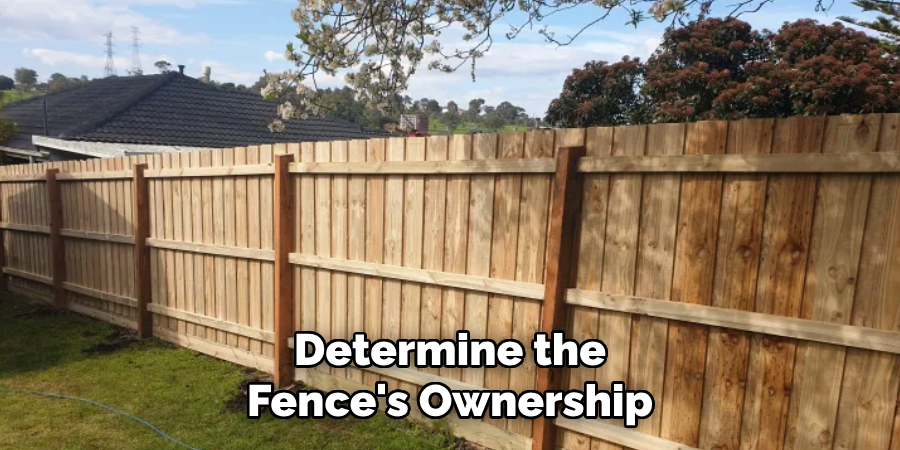
If you still need to determine the fence’s ownership, it may be time to initiate a conversation with your neighbor. Approach the discussion politely and calmly, avoiding confrontation or accusations. Share your findings and ask for their input on the matter. They may have valuable information or insights that can help resolve any uncertainties.
Step 8. Seek Mediation:
If you and your neighbor can’t come to a mutual agreement about the fence’s ownership, consider seeking mediation from a neutral third party. A mediator can facilitate an open and productive discussion between both parties, potentially leading to a resolution that satisfies everyone involved.
Step 9. Involve Your Homeowners Association (HOA):
If you live in a neighborhood with a homeowners association, they may have specific guidelines or regulations regarding fence ownership and maintenance. Consult your HOA’s bylaws or speak to an HOA representative for more information on how they handle disputes over shared property.
Step 10. Contact Your Local Authority:
In cases where the fence’s ownership cannot be resolved between neighbors or through mediation, it may be necessary to involve your local authority. This could be your city or county government, zoning board, or property rights office.

Provide them with all the documentation and evidence you have gathered regarding the fence’s ownership and condition. They can then assess the situation and make a determination based on local laws and regulations.
Overall, determining fence ownership requires thorough research, communication, and possibly involvement of outside resources. By following these steps and gathering all the necessary information, you can confidently navigate any discussions or disputes regarding your property’s fence with your neighbor.
5 Additional Tips and Tricks
- Examine Property Surveys: Check the official property surveys that were conducted when you bought the property. These documents should clearly outline the boundaries and specify which side of the fence is yours.
- Look for “T” and “H” Marks: Some fences have “T” and “H” marks on the posts. A “T” mark facing you generally means the fence is your responsibility, while an “H” mark signifies shared responsibility between neighbors.
- Consult with Neighbors: Sometimes, the easiest way to clarify fence ownership is by simply talking to your neighbors. They might have historical knowledge about the property lines and fence responsibilities.
- Check Local Building Codes: Local building codes and regulations often have stipulations regarding fence installations, including details on which side should face which property. This can give clues about ownership.
- Hire a Professional Surveyor: If there’s still uncertainty, hiring a professional surveyor can provide a definitive answer. They can assess the property lines accurately and determine which side of the fence is legally yours.
With these additional tips and tricks, you should be able to confidently determine fence ownership.
5 Things You Should Avoid
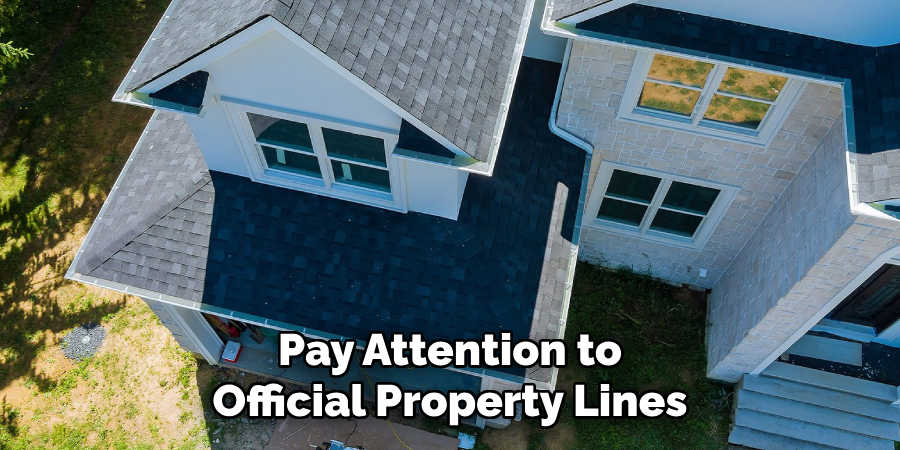
- Assuming Without Checking: Never assume the fence is yours based on guesswork or hearsay. This can lead to disputes or legal issues with neighbors.
- Neglecting Property Lines: Pay attention to official property lines indicated in your deed or property survey. These documents are crucial for understanding boundary responsibilities.
- Overlooking Local Laws: Do not disregard local zoning laws and ordinances that pertain to fencing. These laws often dictate specifics about fence ownership and maintenance.
- Skipping Professional Advice: Steering clear of professional help, like that from surveyors or legal advisors, can result in inaccurate assumptions about your fence. Their expertise can save time and prevent conflict.
- Damaging Relationships with Neighbors: Avoid actions or decisions about the fence that could sour relationships with neighbors. Cooperation and communication are key to resolving any boundary or ownership issues amicably.
By avoiding these common pitfalls, you can ensure a smoother and more accurate process of determining fence ownership.
5 Different Ways to Handle Fence Disputes
- Negotiate a Resolution: The first step in resolving a fence dispute should always be open communication. Discuss the issue with your neighbor and try to come up with a mutually agreeable solution.
- Mediation Services: If negotiations fail, consider seeking the help of a mediator. These professionals can facilitate discussions between parties and help come to a resolution.
- Arbitration: Some neighborhoods or homeowners associations have arbitration procedures in place to handle disputes between neighbors. This involves presenting the issue to a neutral third party for a binding decision.
- Install a Shared Fence: If all else fails, consider installing a shared fence that both you and your neighbor can have equal ownership and responsibility for.
- Use any Signs of Ownership: If all else fails, consider using any signs or markers on the fence that may indicate ownership. These could include maintenance work you have done on the fence or specific features that you added.
By approaching a dispute through these different methods, you can reach a resolution in a fair and civil manner. Remember to always prioritize communication and cooperation with your neighbor during this process.
Can My Neighbor Lean Things Against My Fence?
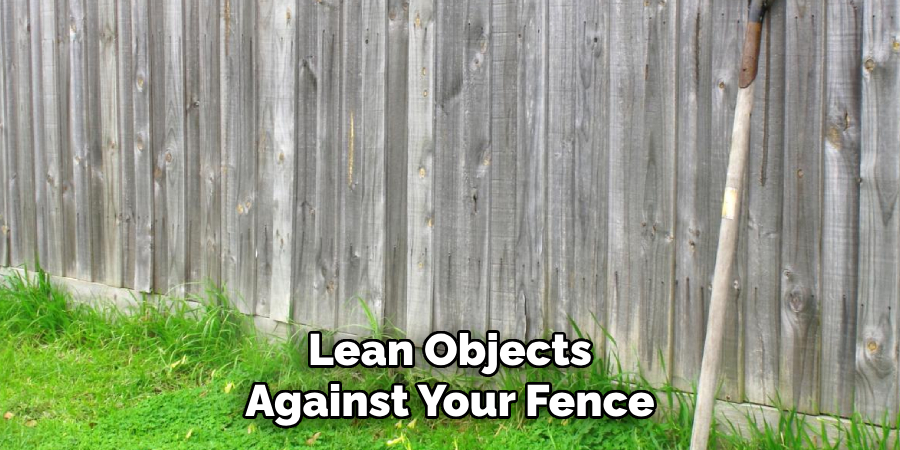
While it depends on your local laws and regulations, in most cases, your neighbor is not allowed to lean objects against your fence without your permission. This is because leaning items against a fence can cause damage or wear over time, potentially leading to costly repairs.
However, if the objects being leaned are lightweight and do not harm the fence, it might be acceptable. Additionally, if both parties have agreed upon the objects being leaned against the fence, it is permissible.
It’s always best to communicate with your neighbor and come to an agreement or understanding before allowing anything to be leaned against your fence. This can prevent any potential damage or disputes in the future.
Also, it’s important to regularly inspect and maintain your fence to ensure its longevity and stability. Overall, it’s important to have open communication and respect for each other’s property when it comes to fences and their usage.
So next time you notice something leaning against your fence, make sure to double check with your neighbor and discuss any concerns or potential damages that may arise. By doing so, you can maintain a good relationship with your neighbor and keep your fence in good condition.
Can My Neighbors Paint My Side of His Fence?
Generally, your neighbor is allowed to paint or make any changes to your side of the fence with your permission. This includes any permanent alterations such as painting, staining, or adding decorations. Your fence is considered part of your property and should not be altered without your consent.
However, if both parties agree upon a certain color or design for the fence, then it might be acceptable for your neighbor to paint their side of the fence. It’s always best to have open communication and come to a mutual understanding before any changes are made.
If you notice your neighbor painting or making any alterations to your side of the fence without permission, it’s important to address the issue calmly and discuss potential solutions together. This can help prevent conflicts and maintain a good relationship with your neighbor.
In conclusion, it’s important to respect each other’s property and have open communication when it comes to fences.
Who Owns the Right Side of the Fence?
In most cases, the owner of the fence is responsible for maintaining and repairing both sides of the fence. This means that if your neighbor’s fence is on your right side, you may be responsible for maintaining and repairing that portion.
However, it’s important to check with local laws and regulations as they may vary depending on your location. In some areas, there may be specific rules regarding fence ownership and maintenance that override the general practice of the right side being owned by the fence owner.
If there is a dispute about fence ownership, it’s important to address it calmly and refer to any relevant laws or agreements. It may also be helpful to consult with a professional, such as a surveyor or legal advisor, for an accurate determination of fence ownership.
In any case, it’s important to prioritize communication and cooperation with your neighbor when dealing with fence ownership. This can help prevent conflicts and maintain a positive relationship.
Conclusion
In determining fence ownership, a combination of local regulations, physical indicators, and amicable neighborly communication is key. To conclusively ascertain whether a fence belongs to you, consider consulting property deeds, boundary surveys, and any existing agreements with neighbors.
Additionally, observable markers such as the direction the fence faces, the location of supporting posts, and any unique modifications can offer clues to ownership. Should disputes arise, employing conflict resolution strategies such as mediation or arbitration can lead to equitable solutions.
Hopefully, by employing these strategies on how to tell if the fence is yours, you can avoid any future complications and peacefully enjoy your property. Overall, it’s important to communicate openly and have a mutual understanding with your neighbor to maintain a good relationship and resolve any disputes that may arise when it comes to fence ownership.
With patience, respect, and clear communication, you can successfully navigate fence ownership issues. Good luck!

